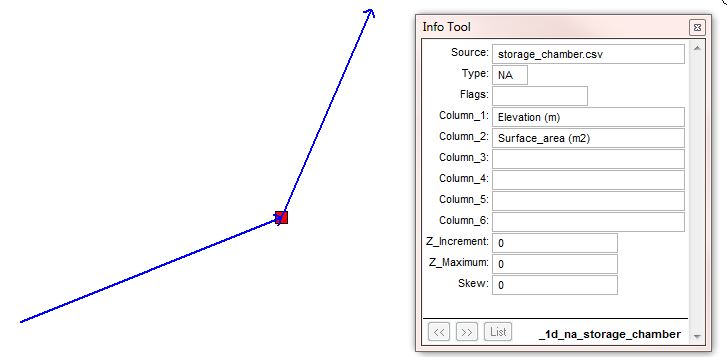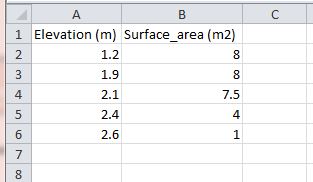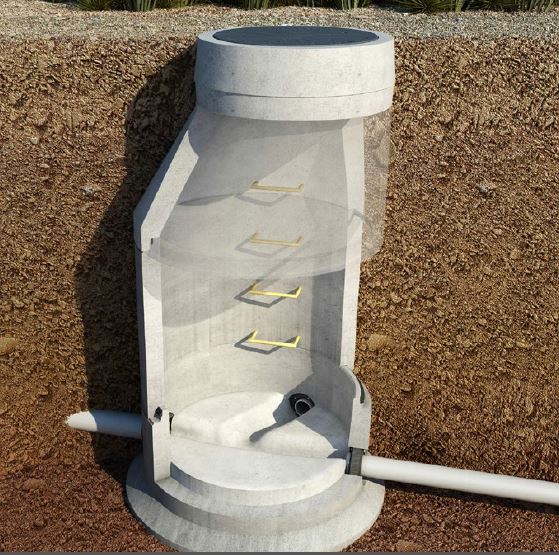Difference between revisions of "1D Manholes"
Rohan.king (talk | contribs) |
Tuflowduncan (talk | contribs) (→Losses) |
||
| Line 22: | Line 22: | ||
=Losses= | =Losses= | ||
| − | The default loss | + | When modelling conduit pipe flows, the head losses that the flow in pipe are subject to are made up of major losses (or friction losses) and minor losses (or local losses). Major losses are caused by forces between the flow and wetted perimeter of the conduit. Minor losses are caused by disruption to the flow due to bends, cross-sectional changes, fittings such as manholes and steps in the bed profile. Major losses are represented through the specification of a friction coefficient. The representation of minor losses, particularly or gravity networks, is at manholes and requires separate treatment. The default TUFLOW/Estry manhole loss approach uses the Engelund method explained in section 5.12.5.4 of the TUFLOW user manual. The Engelund approach provides an automatic method for determining the loss coefficients as presented below. Of note is that the coefficients are recalculated every timestep, and therefore vary depending on the flow distribution between inlet and outlet conduits and the depth of water within the manhole. The losses represented are as follows: |
| + | |||
| + | • K<sub>entry</sub> covers the expansion of flow within the manhole at the outlet of an inlet conduit. The coefficient is applied as the exit loss of the inlet conduit. | ||
| + | • K<sub>Ɵ</sub> represents the losses due to a change in direction (i.e. a bend) between inlet and outlet conduits. KƟ is determined automatically by TUFLOW based on the angle of the digitised lines of the conduits. For the inlet conduit the last two vertices of the line are used and for the outlet conduit the first two vertices. | ||
| + | • K<sub>drop</sub> is the loss coefficient due to a change in invert level and conduit height between inlet and outlet conduits. | ||
| + | • K<sub>Ɵ</sub> and K<sub>drop</sub> are added and applied as an energy loss for each outlet conduit. | ||
| + | • K<sub>exit</sub> covers the contraction from the manhole and re-expansion of flow within the entrance of an outlet conduit. It is applied as an entrance loss of the outlet. | ||
| + | • K<sub>m</sub> is the user-defined manhole exit coefficient. | ||
| + | |||
| + | The resulting headloss value is then applied, when sub-critical flow is experienced, to the standard head loss equation, i.e. dh = K*V<sup>2</sup>/2g. Where K is the loss coefficient, V is the conduit velocity and g the gravitation constant. | ||
| + | The equations used for the Engelund loss approach are provided below. | ||
| + | <br> | ||
| + | Below are three worked examples of the application of the Engelund method applied to a simple model for the following scenarios: | ||
| + | • Single Incoming/Outgoing Pipe with no angle and no drop | ||
| + | • Single Incoming/Outgoing Pipe with incoming bend and drop in levels | ||
| + | • Multiple Incoming Pipes with incoming bend and drop in levels | ||
<br> | <br> | ||
There is information located [http://www.tuflow.com/forum/index.php?/topic/1539-losses-for-j-type-manhole/#comment-3903 here] as to how TUFLOW calculates the default Engelund approach within junction "J" type manholes. | There is information located [http://www.tuflow.com/forum/index.php?/topic/1539-losses-for-j-type-manhole/#comment-3903 here] as to how TUFLOW calculates the default Engelund approach within junction "J" type manholes. | ||
Revision as of 18:43, 25 May 2021
Page Under Construction
Introduction
Manholes are typically chambers used to provide one or all of the following; maintenance access, change in culvert direction, connections and change in culvert dimensions. By default, manholes are automatically created within TUFLOW at all culvert nodes, any manually created manhole will override the automatically created manhole.
Manholes are used at culvert junctions to dissipate energy due to:
- Expansion/contraction of flow within the manhole chamber and outlet culverts.
- Change in direction of the culverts (i.e. a bend/deflection).
- Change in height, width or diameter and/or invert level of the adjoining culverts.
The presence of a manhole at a junction point will override the exit loss of any culvert discharging into the manhole and entrance loss of any culvert taking from our of the manhole.
There are 3 types of manholes:
- "C" for circular chambers.
- "R" for rectangular chambers.
- "J" for junctions without a chamber
Losses
When modelling conduit pipe flows, the head losses that the flow in pipe are subject to are made up of major losses (or friction losses) and minor losses (or local losses). Major losses are caused by forces between the flow and wetted perimeter of the conduit. Minor losses are caused by disruption to the flow due to bends, cross-sectional changes, fittings such as manholes and steps in the bed profile. Major losses are represented through the specification of a friction coefficient. The representation of minor losses, particularly or gravity networks, is at manholes and requires separate treatment. The default TUFLOW/Estry manhole loss approach uses the Engelund method explained in section 5.12.5.4 of the TUFLOW user manual. The Engelund approach provides an automatic method for determining the loss coefficients as presented below. Of note is that the coefficients are recalculated every timestep, and therefore vary depending on the flow distribution between inlet and outlet conduits and the depth of water within the manhole. The losses represented are as follows:
• Kentry covers the expansion of flow within the manhole at the outlet of an inlet conduit. The coefficient is applied as the exit loss of the inlet conduit. • KƟ represents the losses due to a change in direction (i.e. a bend) between inlet and outlet conduits. KƟ is determined automatically by TUFLOW based on the angle of the digitised lines of the conduits. For the inlet conduit the last two vertices of the line are used and for the outlet conduit the first two vertices. • Kdrop is the loss coefficient due to a change in invert level and conduit height between inlet and outlet conduits. • KƟ and Kdrop are added and applied as an energy loss for each outlet conduit. • Kexit covers the contraction from the manhole and re-expansion of flow within the entrance of an outlet conduit. It is applied as an entrance loss of the outlet. • Km is the user-defined manhole exit coefficient.
The resulting headloss value is then applied, when sub-critical flow is experienced, to the standard head loss equation, i.e. dh = K*V2/2g. Where K is the loss coefficient, V is the conduit velocity and g the gravitation constant.
The equations used for the Engelund loss approach are provided below.
Below are three worked examples of the application of the Engelund method applied to a simple model for the following scenarios:
• Single Incoming/Outgoing Pipe with no angle and no drop
• Single Incoming/Outgoing Pipe with incoming bend and drop in levels
• Multiple Incoming Pipes with incoming bend and drop in levels
There is information located here as to how TUFLOW calculates the default Engelund approach within junction "J" type manholes.
Storage chambers
Storage, including storage chambers or floodplain storage, can be manually defined using a 1d_na (1d_tab_empty) node that has an assigned elevation versus surface area table. For the purpose of this page, manmade storage chambers have been discussed although the method is the same for all applications.
An example of a chamber:
Methodology
- Import 1d_na node.
- Assign the name of the elevation vs area csv.
- Specify the names for the elevation and surface area columns

storage_chamber.csv

For more information on storage nodes see Section 5.10.3 Storage Nodes (User Defined NA Tables) within the TUFLOW manual.
Any further questions please email TUFLOW support: support@tuflow.com
Back to 1D Hydraulic Structures
